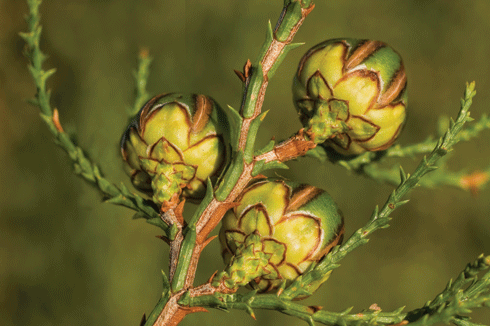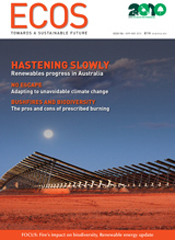
|
Published:
New conservation reserve for declining wildlife
1000 hectares of land located 160 kilometres from Albany in south-west Western Australia will be revegetated to ensure the survival of a number of threatened animal species after Bush Heritage Australia’s recent purchase of the Monjebup North Reserve.

|
|
Swamp cypress (Actinostrobus pyramidalis), one of the species found on the Monjebup North Reserve. Credit: Jiri Lochman
|
The reserve is located in the south-west corner of Western Australia, Australia’s only globally-recognised biodiversity hotspot. Although the hotspot covers only 2 per cent of Australia’s landmass, it has an estimated 25 per cent of Australia’s total plant species, or about 1.5 per cent of the world’s total.
Bush Heritage will revegetate the area with $650 000 worth of seed and over 100 indigenous plant species – purchased with the financial support of The Nature Conservancy and an anonymous donor. The restoration of this habitat will not only increase the chance of survival for animals such as the malleefowl and the western pygmy possum, whose numbers have declined due to extensive clearing, but will also capture around 100 000 tonnes of carbon.
The reserve is Bush Heritage’s sixth in the visionary Gondwana Link project – a conservation project in south-west Western Australia whose aim is to repair some of the ecological damage inflicted by land clearing and unsustainable land management practices.
Keith Bradby, Director of the Gondwana Link project, said the reserve will be vital to providing safe habitat for declining wildlife. ‘Having additional areas to work with also helps us find out why there is general decline of some critical habitats, such as the local woodlands. These provide valuable habitat to a number of threatened birds, yet many remaining stands are dying,’ said Mr Bradby. ‘While our scientists are working to find out why, the cleared land on Monjebup North is a wonderful opportunity to re-establish some healthy young systems,’ he said.



